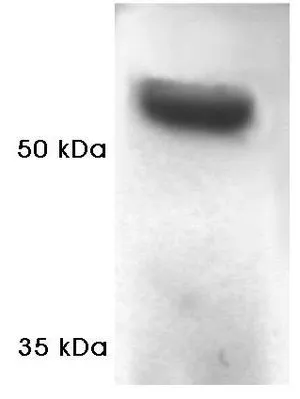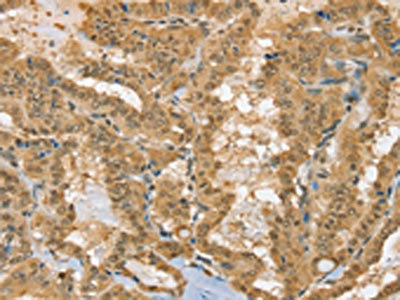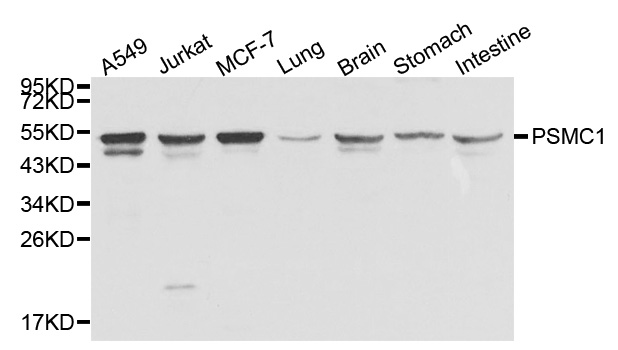
WB analysis of HeLa cell lysate using GTX23317 Proteasome 19S Subunit S4 antibody.
Proteasome 19S Subunit S4 antibody
GTX23317
ApplicationsImmunoPrecipitation, Western Blot
Product group Antibodies
TargetPSMC1
Overview
- SupplierGeneTex
- Product NameProteasome 19S Subunit S4 antibody
- Delivery Days Customer9
- Application Supplier NoteWB: 1:1,000. *Optimal dilutions/concentrations should be determined by the researcher.Not tested in other applications.
- ApplicationsImmunoPrecipitation, Western Blot
- CertificationResearch Use Only
- ClonalityPolyclonal
- ConjugateUnconjugated
- Gene ID5700
- Target namePSMC1
- Target descriptionproteasome 26S subunit, ATPase 1
- Target synonymsNEDGTH, P26S4, RPT2, S4, p56, 26S proteasome regulatory subunit 4, 26S protease regulatory subunit 4, 26S proteasome AAA-ATPase subunit RPT2, proteasome (prosome, macropain) 26S subunit, ATPase, 1, proteasome 26S ATPase subunit 1
- HostRabbit
- IsotypeIgG
- Protein IDP62191
- Protein Name26S proteasome regulatory subunit 4
- Scientific DescriptionThe 26S proteasome is a multicatalytic proteinase complex with a highly ordered structure composed of 2 complexes, a 20S core and a 19S regulator. The 20S core is composed of 4 rings of 28 non-identical subunits; 2 rings are composed of 7 alpha subunits and 2 rings are composed of 7 beta subunits. The 19S regulator is composed of a base, which contains 6 ATPase subunits and 2 non-ATPase subunits, and a lid, which contains up to 10 non-ATPase subunits. Proteasomes are distributed throughout eukaryotic cells at a high concentration and cleave peptides in an ATP/ubiquitin-dependent process in a non-lysosomal pathway. An essential function of a modified proteasome, the immunoproteasome, is the processing of class I MHC peptides. This gene encodes one of the ATPase subunits, a member of the triple-A family of ATPases which have a chaperone-like activity. This subunit and a 20S core alpha subunit interact specifically with the hepatitis B virus X protein, a protein critical to viral replication. This subunit also interacts with the adenovirus E1A protein and this interaction alters the activity of the proteasome. Finally, this subunit interacts with ataxin-7, suggesting a role for the proteasome in the development of spinocerebellar ataxia type 7, a progressive neurodegenerative disorder. [provided by RefSeq, Jul 2008]
- Storage Instruction-20°C or -80°C,2°C to 8°C
- UNSPSC12352203








